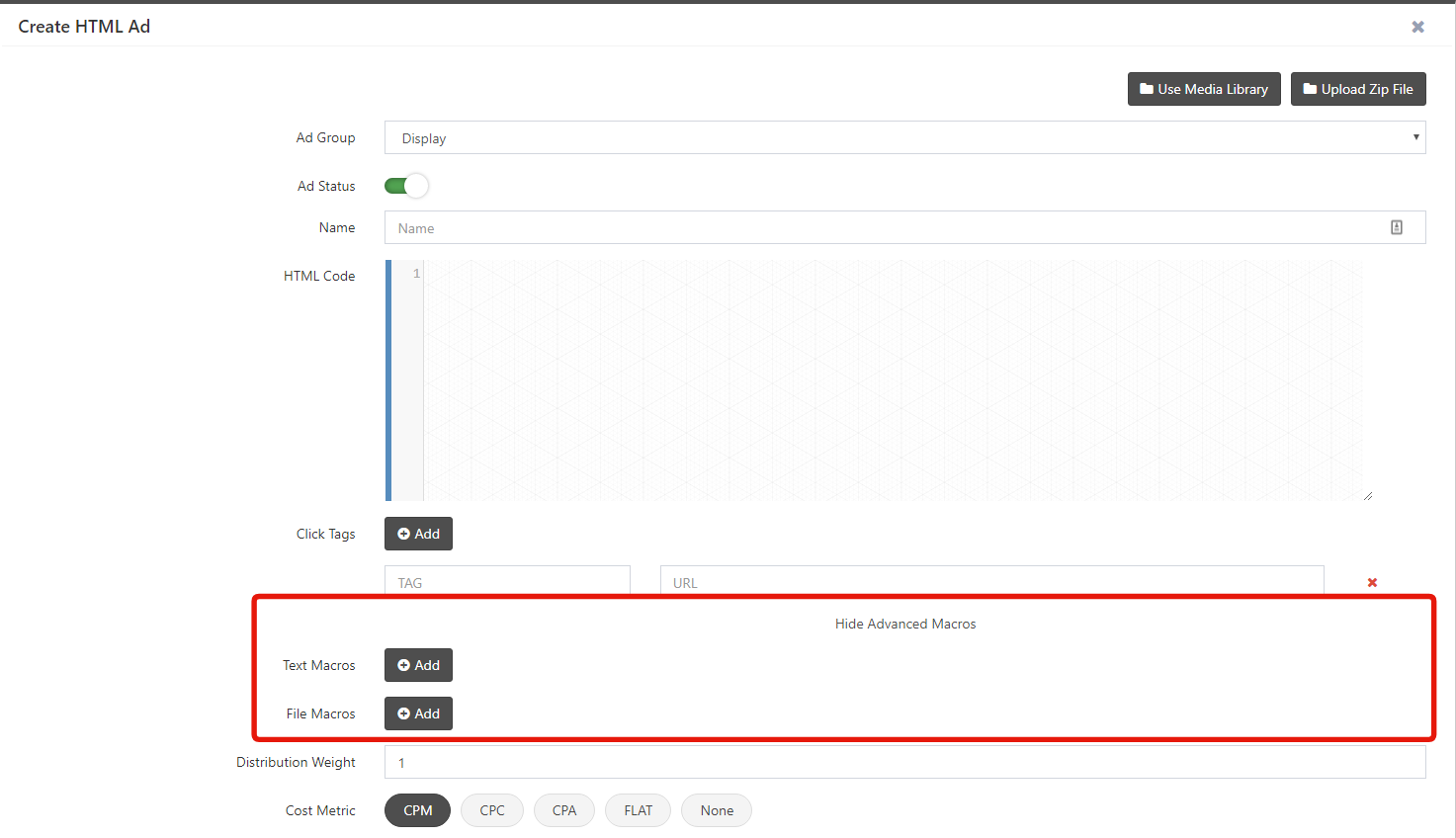HTML Ad Advanced Macros
Learn how to use macros in your HTML ads.
UpRival makes it easy to customize the text and images in your HTML ads by using advanced macros. Its as easy as replacing destination links, images, and text in your code with macros that you create in UpRival. You can create as multiple advanced macros to customize things like headline text, images, css files, javascript files, and price points. To set up advanced macros, click the “Show Advanced Macros” hyperlink on the Create HTML Ad screen.

In addition to Click Tags you will see options to create Text Macros and File Macros.
- Click Tags – Used to track ad clicks and redirect people who click on your ads to your sales/landing pages.
- Text Macros – Used to customize text fields in your ad.
- File Macros – Used to customize links to files (i.e. image, video, css, javascript) in your ad.
Setting Up Your Macros
Click Tags: In the first field, labeled TAG, is where you enter the name of your click tag. The second field, labeled “URL,” is where you enter a URL where people who click on your ad will be redirected to.
Text Macros: In the first field, labeled “Text Macro,” is where you enter the name for your text macro. The second field, labeled “Text,” is where you enter the text that will populate to your text macro in the HTML code.
File Macros: In the first field, labeled “File Macro,” is where you enter the name for your file macro. The second field, labeled “URL,” is where you enter the URL of the file that will populate to your file macro in the HTML code. With file macros you have the option to upload a file from your computer. Click the blue upload button next to the URL field to upload a file. Supported files types are png, jpg, gif, mp4, css, js, ttf/otf, woff, woff2, and eot.
Tag/File macro names are case sensitive.
Using Macros in HTML Code
To use your macros in your HTML code, insert the tag/macro name into your HTML code surrounded by {}. For example, if you name your file macro, “image1,” then you will reference the image file in your macro by inserting {image1} as the img src.

The above image shows a simple example of using different macros in the HTML code.
